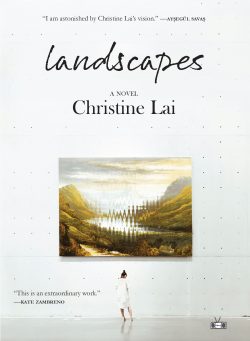What struck me first were the ways of exiting — via bird, via memory, via magic. Brent Ameneyro’s speakers are all knowing and all nostalgia. Producing not the sheen of romantic recall but the cleverness of reconstruction. In Ameneyro’s debut, A Face Out of Clay, there is no questioning, but lingering visitations. Portraits of loved ones, of lived in spaces, all held up in a magnificent, power-inducing light. In “As the Fog Starts Burning Away,” the speaker says, “I don’t want to think/about the people I love/dying.” So dead they shall not stay, rather, take Mayté, who, in a later poem, “turned/into a crested caracara,/blew the napkins off the table/when she opened her wings.”
Again, in the poem “The Overwhelming Smell of Rosemary” we are met with “A bird, mid-flight,” as it “gains human-level consciousness.” We watch as the bird watches, a man, mid-walk, reaching out towards a rosemary memory. As the poem’s title suggests, and as fact permits, smell is the strongest sense for transport; the bird hurled through time to the man’s childhood yard, and then again thrown to the future, and his rosemary scented fingertips.
This is the method by which this collection guides us. There’s a surreal suspension in his work which allows for the liminal border space that Ameneyro himself may occupy to be made tangible within these pages. The border between life and death, past and future, country and country, becomes easily traversable. Reality is just a mere suggestion for Ameneyro, and “cosmic anarchy” is just a parenthetical. Though yes, there are still truths and swelling moments of peace embedded. They can be found in every poem and tucked between the line breaks, there: “boys washing windshields,/their sisters selling bracelets at the red light,” there: “the newly appointed/middle school teacher/who was queen/of keg stands,” and there: “we were all sitting/in suspense/hanging onto his every/word.”
The images appear so properly rendered; they act as translator and as transporter. Having no personal connection to the city of Puebla, I can see now the “houses like parakeets/perched on a dirt road” or smell the scent of the
“fried pig skin
peppers
tortillas
dirt
car tires cigarette smoke”
during “A Walk in Mercado de La Merced.” This rich image system serves as an obvious boon for Ameneyro’s poems, which have no interest in teaching, in delineating what is or isn’t “yours.” Instead, these poems assert, or rather demand, that we “do not refuse what you are.” Where one comes from, where one may go.
Ameneyro’s Tectonic poems do a different sort of traversal, that of the eye, that of association. In his note section he describes the form as dealing “with rupture, bodies (both the human body and the earth’s body), and uncertainty.” The form calls for a prose block to be written, repeated, then redacted, ensuring that whatever is erased in the top half remains present in the bottom. These poems claw at completeness, showing both a whole and the sum of its parts. They trick the eye, it is almost inevitable that your sight will slip between lines, between meaning.
In as much, the meaning making is occurring over time. Of the poems, the four Tectonic iterations are among the selections I have returned to the most. Highlighting the bottom half, attempting to read the complete whole of what has been erased, only after seeking that elusive middle fissure, the center between the repeated prose block where the top erasure is then inverted; the redactions being revealed beneath themselves. The lack of capitalization and punctuation act as obscurant, blending start and end, making all associative links possible and plausible. A great equalizer of signs and language. Everything is flattened, almost unassuming, white space giving to focal points as a painting’s lighting leads the eye.
Take, for example, the second iteration of “Tectonics” — “the first american” appearing twice, center-right, with cavernous dips of white space to the left. This symbol contextualized by its surrounding, and occasionally opposing, symbols: “fast” “food” “chiles en nogada” “snow-capped volcanoes” “giant gray warehouse” — several realities plucked and isolated, as to be distilled to their valences and sent vibrating within the same space, just as tectonic plates form the uppermost mantle and form the constantly moving foundation upon which we live. In this way these new formal poems act as anchors for this collection, the tectonic plates of which Ameneyro’s poetic landscape glides over.
As such, whereas the above iteration tends to send me inward, into a more contemplative realm, the third iteration of “Tectonics” is sweeter, speaks of the earth, “about blood” “her skin” “her own hand” “her heart.” It sends me outside. Shows that all of this has already been happening, intermingling ideas and matter, connections endlessly connecting. These poems show that despite a sense of unity, schisms are inevitable. And so, if “Tectonics” serve as mantle, the hot heat center of the poetic interior, what to do with the surrounding work, the whole of the moving (poetic) earth?
Well, this collection has shown that living and the sweet gift of remembrance is impossible without movement. And as is stated in “Movement Manifesto,” here is a helpful “rule:use everything/if you have to/as long as you don’t stop.” Indeed, this stellar debut from Ameneyro does little to indicate his slowing down, rather, he has proven that he is not afraid to go outside the observable universe for his answers.





















